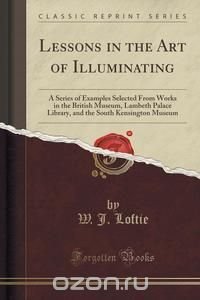Excerpt from Lessons in the Art of Illuminating: A Series of Examples Selected From Works in the British Museum, Lambeth Palace Library, and the South Kensington Museum
Perhaps the art of Illumination, although it is closely connected with that of Writing, may be entitled to a separate history. Men could write long before it occurred to them to ornament their writings: and the modern student will find that what he looks upon as genuine illumination is not to be traced back many centuries. True one or two Roman manuscripts are in existence which may be dated soon after a.d.200, and which are illustrated rather than illuminated with pictures. But the medieval art, and especially that branch of it which flourished in our own country, has a different origin, and sprang from the system, not of illustration, but of pure ornamentation, which prevailed in Ireland before the eighth century, but which reached its highest development among the Oriental Moslems. The works of the Irish school were for long and are sometimes still called "Anglo-Saxon," and there can be no doubt that the Irish missionaries brought with them to lona and to Lindisfarne the traditions and practice of the art, which they taught, with Christianity, to the heathens of England. I will therefore refer the reader who desires to know more of paleeography in general, and of the principal foreign schools of the art of writing, to the great works of M. Sylvestre, of Messieurs Wyatt and Tymms, of Henry Shaw, and Miss Stokes, and to various isolated papers in the Transactions of the Antiquarian Societies; and I will begin with the earliest practice of the art in our own country and by our own ancestors.
During the eighth century rivalry to Irish art sprung up in the south; and the immediate followers of St. Augustine of Canterbury founded a scriptorium which produced 3 many fine specimens.
About the Publisher
Forgotten Books publishes hundreds of thousands of rare and classic books. Find more at www.forgottenbooks.com
This book is a reproduction of an important historical work. Forgotten Books uses state-of-the-art technology to digitally reconstruct the work, preserving the original format whilst repairing imperfections present in the aged copy. In rare cases, an imperfection in the original, such as a blemish or missing page, may be replicated in our edition. We do, however, repair the vast majority of imperfections successfully; any imperfections that remain are intentionally left to preserve the state of such historical works. Это и многое другое вы найдете в книге Lessons in the Art of Illuminating (W. J. Loftie)
